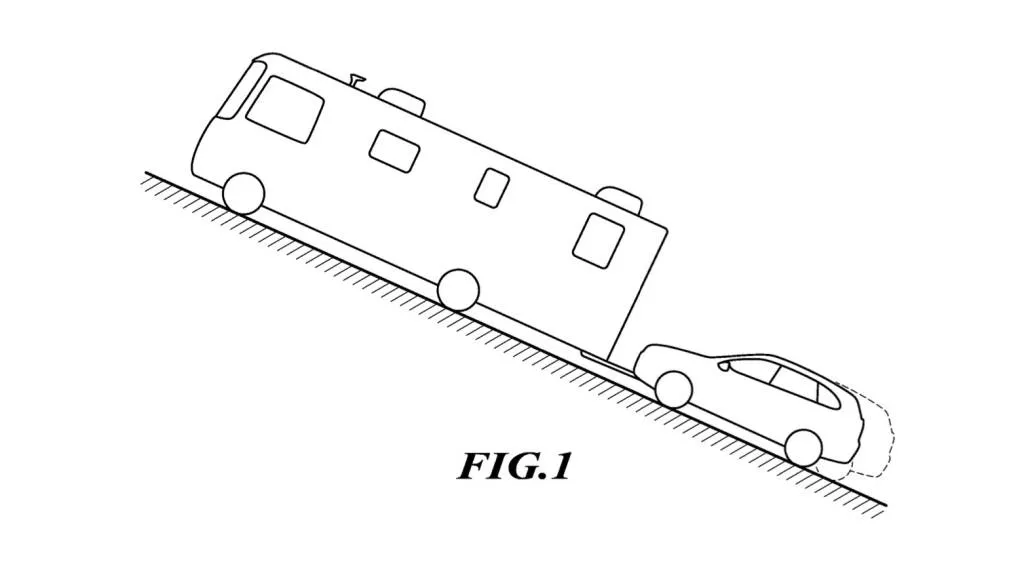Rivian developing software for free-wheel towing
Rivian is developing software that would allow its EVs to be free-wheel towed, according to a patent filing.
Free-wheel towing is when a car is towed behind another vehicle with all four wheels on the ground. It’s a common practice for RV owners, who often tow cars behind their motorhomes so they have a way to get around when they reach their destination.
In the patent application in question, which was published by the United States Patent and Trademark Office (USPTO) on Feb. 13 (but filed on May 12, 2021), Rivian proposes adding a software mode for free-wheel towing to its electric pickup trucks and SUVs, alongside the various drive modes and other software-enabled features already available.
Free-wheel towing mode would disconnect the motor or motors that normally power the rear wheels, but keep the front-axle motor or motors engaged. Torque would still be applied to the front wheels to keep the vehicle from rolling out of sync with the tow vehicle. Software would use a vehicle’s existing sensors to measure wheel speed and gradient, applying torque when necessary and cutting it off at a predetermined threshold.

Rivian free-wheel towing patent image
It’s unclear if Rivian will add this feature to production EVs, but it won’t have to wait for a refresh or redesign to do it. Like Tesla, Rivian adds new features via over-the-air (OTA) software updates, such as the Snow mode that joined other drive modes on the R1T and R1S in 2022, or Camp mode, designed to automatically level vehicles at campsites.
Rivian’s next production model, the R2, is scheduled to debut on March 7. It’s an electric SUV that’s expected to be smaller and cheaper than the R1S, but won’t enter production until 2026.
